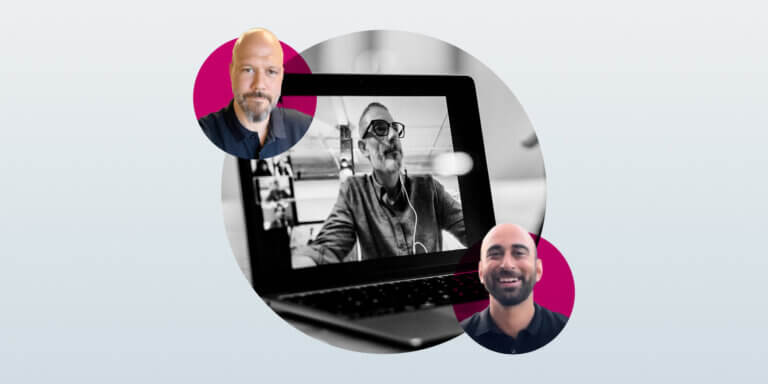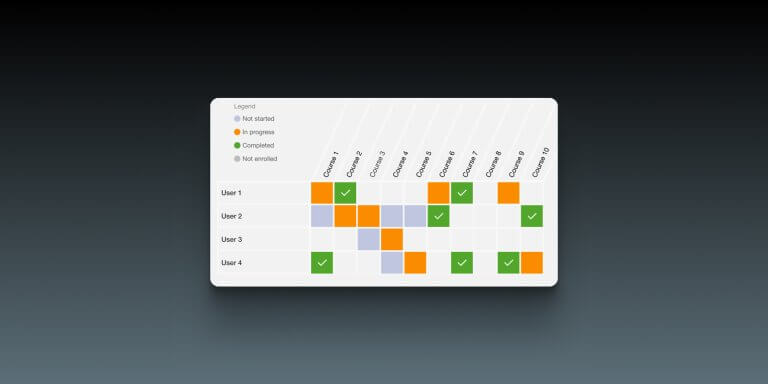Table of Contents
“If you want adoption, start with belonging.”
That was the argument from Alexander Aidun, Director of Education & Documentation at Dremio, in conversation with Brett Hamilton, Customer Success Lead at LearnWorlds, during the Worlds of Learning 2025 Summit.
Alexander made a compelling case for a shift in mindset: from teaching about your product to educating your ecosystem. In open-source software and beyond, the learning journey starts long before someone becomes a customer, and the companies who nurture that curiosity early win trust that money can’t buy.
When developers are educated not just about your product, but the underlying open technology, they become successful users. And success breeds advocacy.
Alexander Aidun, Director of Education & Documentation at Dremio
And who’s Dremio? It’s a lakehouse company built to simplify and accelerate data access for modern enterprises. The platform rests on open-source standards like Apache Iceberg and Apache Arrow, giving organizations flexibility and avoiding vendor lock-in. For Dremio, community-led learning isn’t a side project, but a core business strategy.
Read on to get the gist or watch the talk on demand:
Why “community-first” isn’t a buzzword
The open-source landscape has fundamentally changed how developers discover and adopt technologies. They aren’t waiting for vendor training, but are experimenting and educating themselves.
Alexander explains how community education becomes product adoption:
Community-first isn’t about managing a fan base. It’s about building an ecosystem that learns its way into loyalty.
The four pillars of a community-led academy
Dremio’s customer education strategy rests on four simple but powerful principles, aiming to drive curious individuals in and offer them the knowledge they seek.
1. Free and comprehensive
Although “free” sounds counterintuitive, a paywall is essentially a barrier to entry and slows adoption. Remove the price tag, and you remove friction.
2. Practical and hands-on
Every course tackles a real use case, mirroring the problems developers face daily. Learning sticks when it solves something tangible.
This is why you need to use evangelists to talk about these use cases. A practical approach is going to make sure that the knowledge and the concepts are retained in a way that’s relatable, digestible, and easy to reference.
3. Unified audience strategy
Everyone benefits when everyone is speaking the same language, whether it be the community, prospecting, sales, or support. Shared foundations create consistency.
4. Credential strategy
Badges and certificates aren’t vanity metrics or labels, but proof of progress. Recognition builds commitment, turning casual learners into advocates. When people invest their time and effort, recognition gives them something meaningful in return.
How Dremio adopted a community-first educational strategy
Alexander shared some tips to develop a successful community-led academy:
1. Map the overlap
Community-led education works best when you realize your learners, customers, and partners aren’t separate groups. They’re the same people at different stages. Everyone benefits when everyone has a foundational understanding of the technology and can communicate effectively.
Dremio mapped that overlap and built courses that spoke to all: data engineers, analysts, architects, decision-makers. Remember:
2. Partner with evangelists
Dremio’s community grew faster when it stopped speaking at its users and started speaking through them. The smartest advocates weren’t hired influencers. They were practitioners already teaching, writing, and solving real problems.
Your evangelists are among your community, they could even be your employees, and are already creating traction for this tech to become adopted.
💡 Some ways to partner with evangelists:
3. Lead with credentials
Badges are important not just because they ensure people have something nice to show on LinkedIn. They give structure to learning, checkpoints, and create tangible signals of progress across the community.
How credentials work:
When learners earn visible proof of their progress, motivation compounds. Every badge or certificate becomes both a personal milestone and a public signal of credibility fueling pride, advocacy, and continued participation.
4. Take advantage of LearnWorlds features
Behind every strong community academy is a flexible platform.
For Dremio, LearnWorlds wasn’t just a course builder, it was a creative lab. The team used its flexibility to experiment, automate, and evolve their programs without friction.
As Alexander put it, “We don’t fully know the power we’ve been given.” LearnWorlds lets educators discover that power and keep building on it.
5. Maintain velocity
You need to keep putting content out there to keep people coming back for more. Because popular OSS technologies change weekly. Again, evangelists are important because they are the ones monitoring developments. They will help you know what type of velocity you have to maintain, what you have to build, which new audiences to accommodate.
6. Engage, recognize, and reward
There is not enough time for an educator to do everything on their own. They have to work with a team to build their learning community, and it’s important that you take the time to thank them. Badges are one way to engage and reward them, but think of more creative ways to say thank you,, and they’re going to want to keep working with you.
The future of adoption is education
Dremio’s academy proves that learning isn’t a support function, it’s a strategy. When education is open, practical, and community-led, adoption happens naturally.
A versatile learning platform like LearnWorlds offers a range of features, including a built-in community, to support your efforts and growth removing the complexity.
Watch the full talk to find out more.

Androniki Koumadoraki
Androniki is a Content Writer at LearnWorlds sharing Instructional Design and marketing tips. With solid experience in B2B writing and technical translation, she is passionate about learning and spreading knowledge. She is also an aspiring yogi, a book nerd, and a talented transponster.




